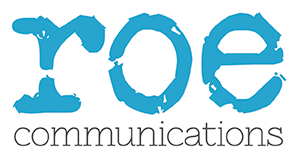One of the primary reasons business schools approach us is that they want to improve their coverage in the international media.
Often they are very good at generating press coverage in their own country or region, either through their team or through an agency.
But when it comes to getting international media coverage, they either don’t have the resources or knowledge to make it happen. Some have tried, but not had much success.
So where do you start?
The international media landscape
Let’s step back to define what we mean by international media.
Our definition is those media outlets with audiences in multiple countries. Usually, but not always, they are English-speaking and will usually have significant social media followings or a powerful online presence. Often they are highly influential in terms of attracting new students.
Examples include the Financial Times, the BBC, Forbes and The Economist.
Why bother with international media?
Getting international media coverage for your business school can be a game-changer. For example, it can:
- Enhance your brand awareness internationally
- Underpin your business school’s research and teaching impact
- Expand your reach into new markets
- Build trust internationally through third-party endorsement
- Reach target audiences such as new clients, partners or academics
- Increase people’s perception of your size and influence
- Differentiate you from competitors that only target local markets
- Establish yourself as a thought leader internationally
- Support new business activities
But getting noticed by international journalists is no easy feat. With tight deadlines and overflowing inboxes, they’re inundated with pitches. So, how can your business school stand out?
Top tips to cut through the noise
1. Be relevant
Relevance is the top priority for journalists. To secure international media coverage business schools should research journalists and their audiences before pitching:
- Understand the journalist’s beat: know their preferred topics and style.
- Tailor your story: ensure it aligns with the publication’s audience and mission. Don’t pitch localised stories to outlets with a global focus.
- Build relationships: approach media relations as a long-term effort. Media relations is about building long-term relationships and not the hard sell.
2. Craft a compelling angle
In the media world, it’s rarely about you. Unless you’re Apple or Microsoft, journalists are unlikely to focus on your institution alone. To achieve international media coverage, find a compelling angle:
- Tie into global trends: highlight how your story connects to broader issues or movements.
- Offer something unexpected: is your story surprising, counterintuitive, or challenging conventional wisdom?
- Mirror their style: review your target media’s recent stories and adapt your pitch to align with their tone and approach.
Avoid promotional press releases. Journalists value substance over self-promotion.
And remember that personalised pitches often yield better results than generic press releases.
3. Be helpful
Journalists’ time is precious. Your pitch should make their job easier, not harder.
- Offer useful resources: provide expert commentary, relevant statistics, research findings, or quality visuals.
- Be dependable: deliver on promises promptly and be mindful of their deadlines.
- Simplify your language: avoid academic jargon; use plain, accessible language.
By demonstrating value and reliability, you’ll increase the likelihood of them coming back to you.
In summary
Breaking into international media requires strategy, relevance, and a genuine understanding of journalists’ needs. By crafting tailored pitches, offering unique perspectives, and maintaining professionalism, your business school can successfully capture the attention of global audiences.
If you want international press coverage for your business school in 2025, get in touch!


